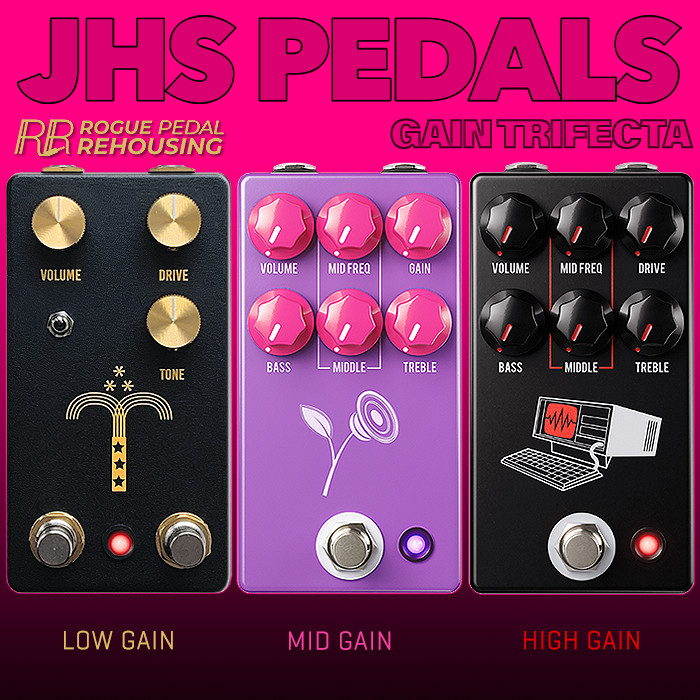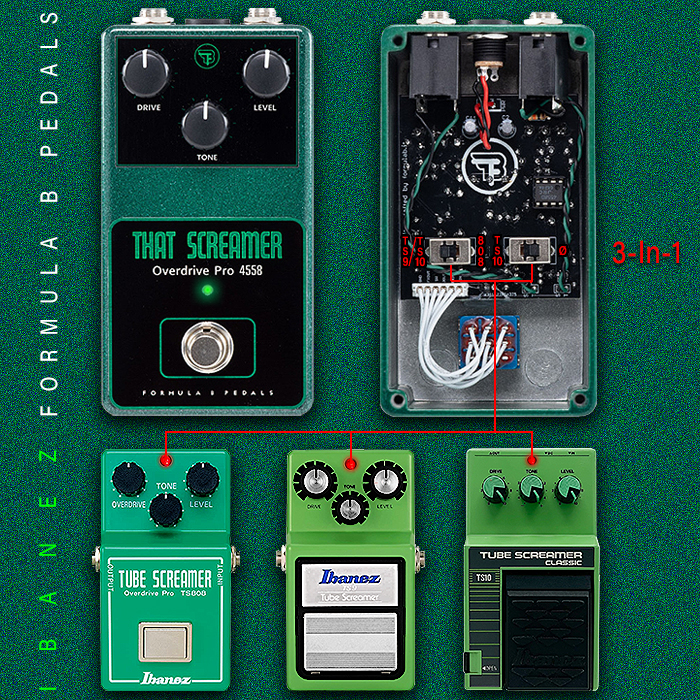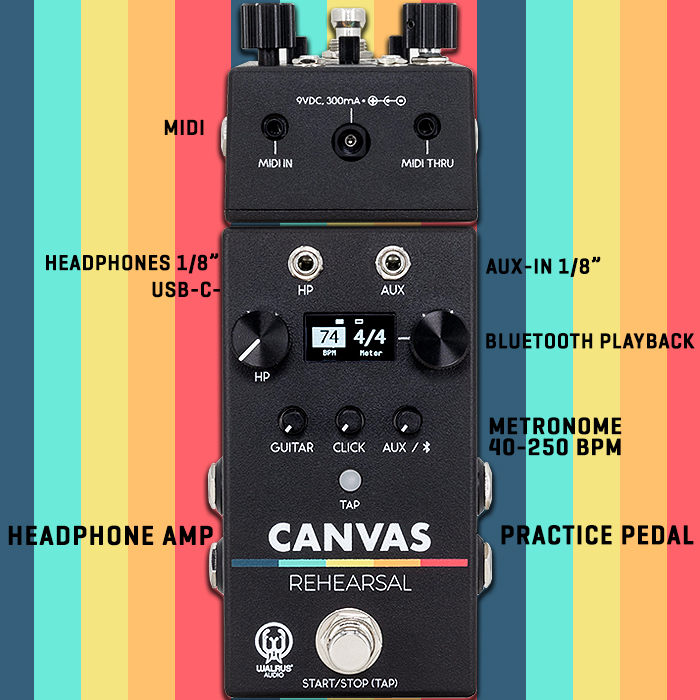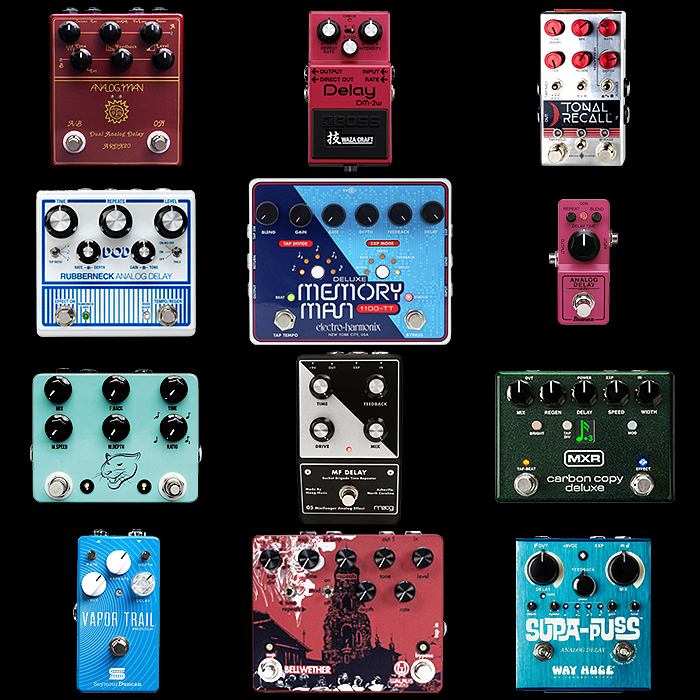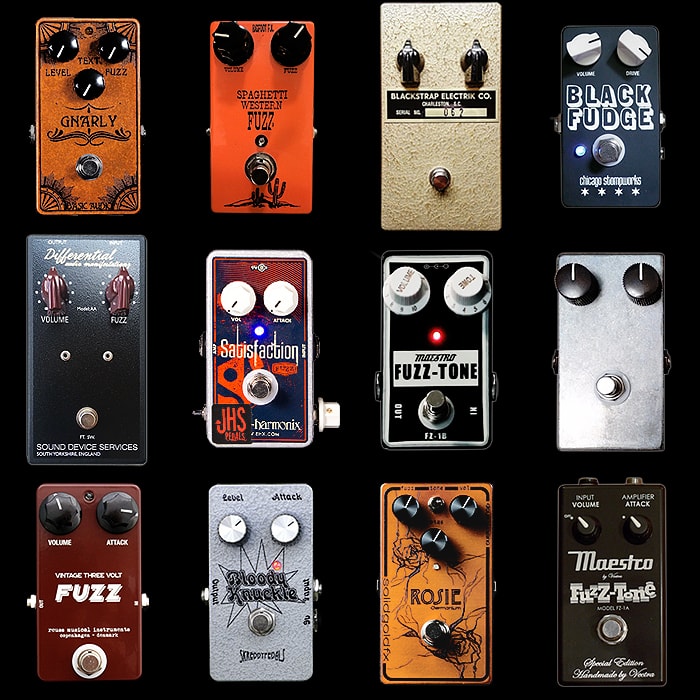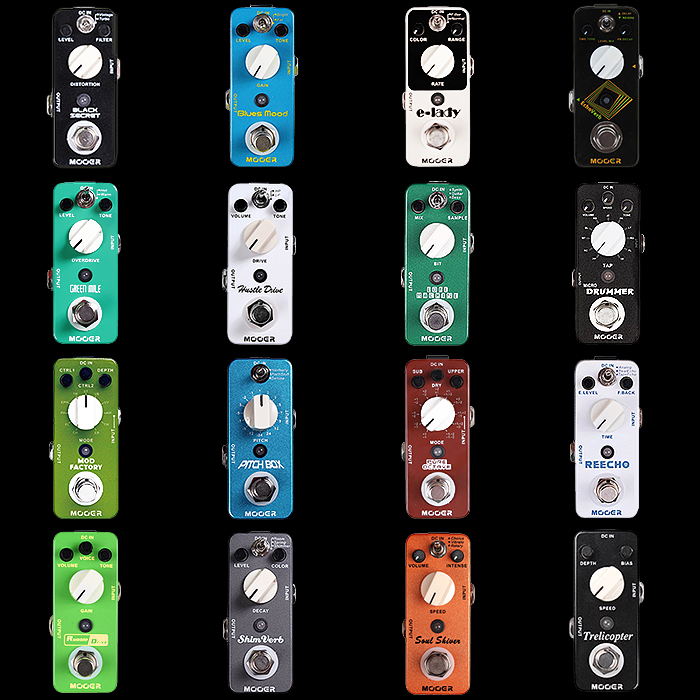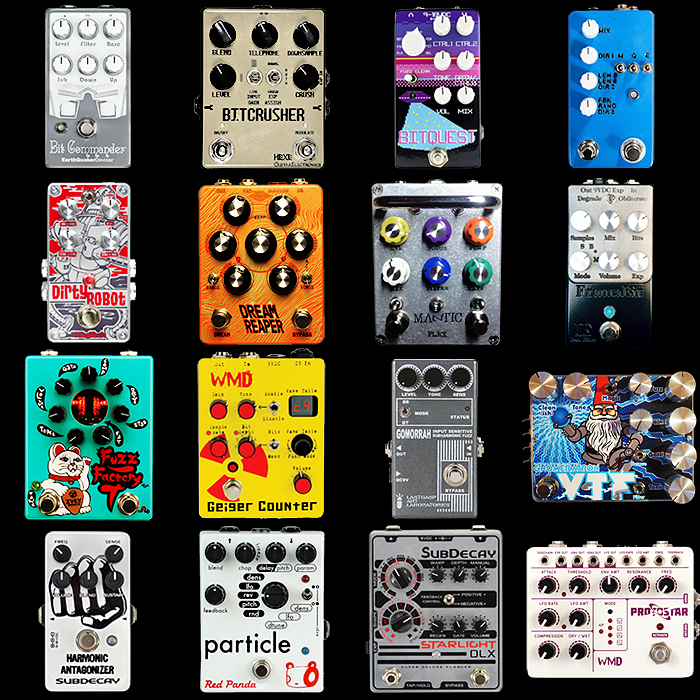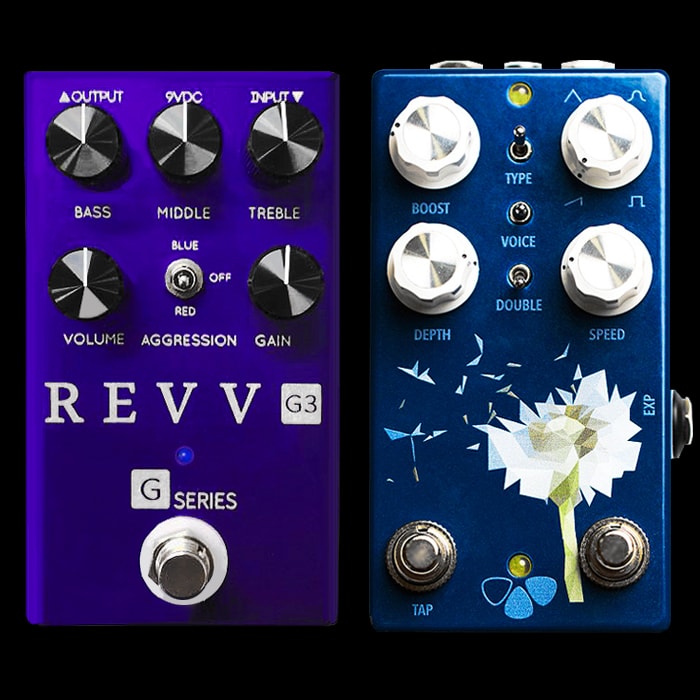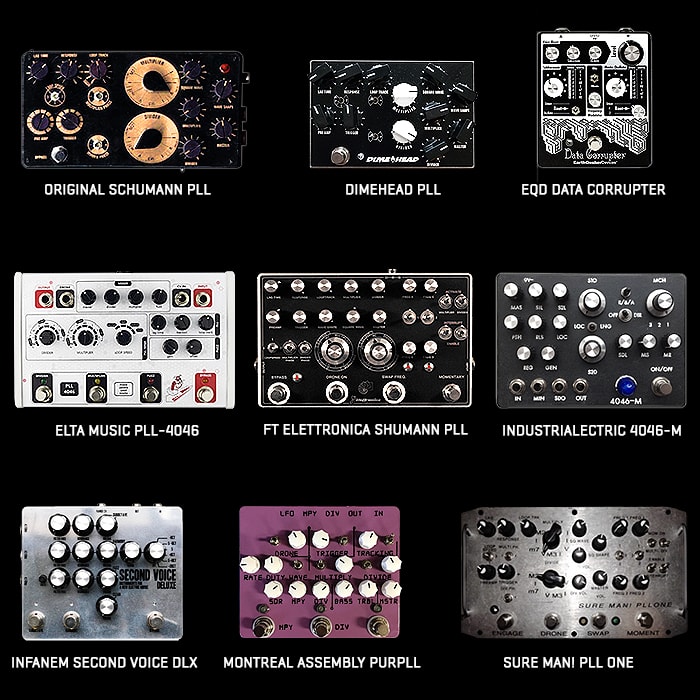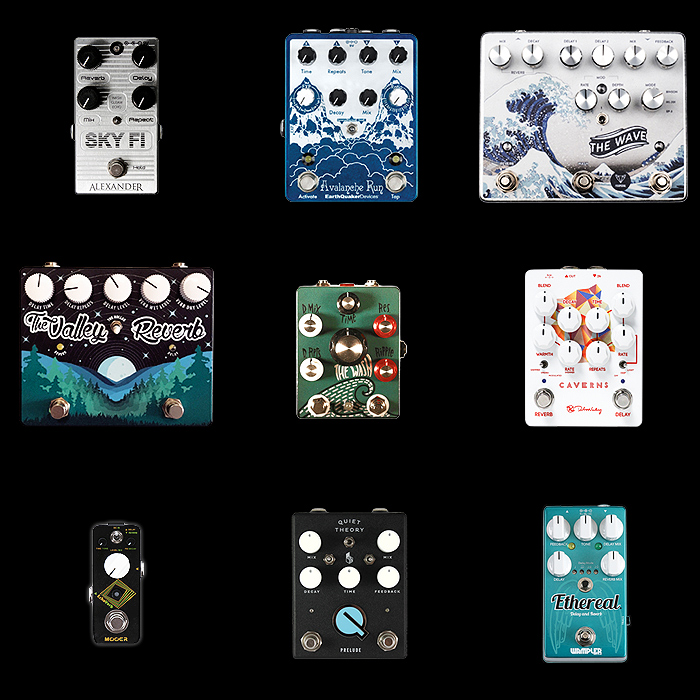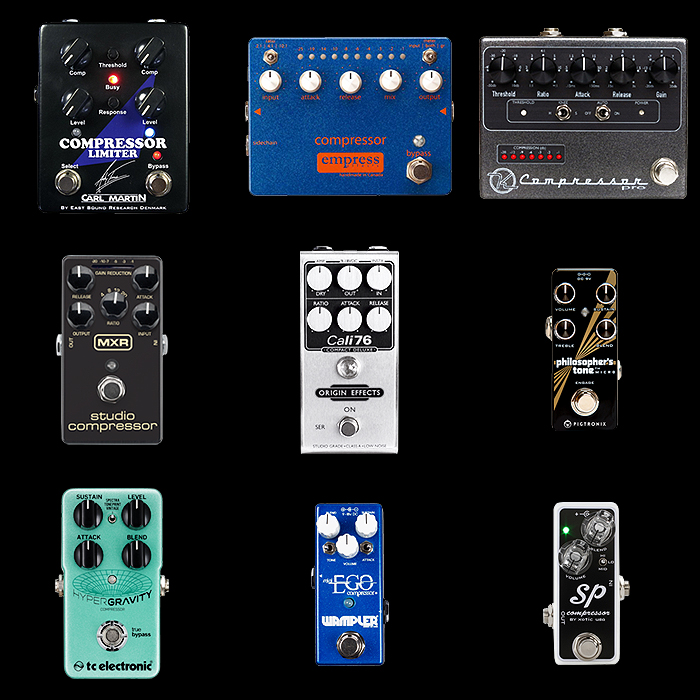9 of the Best Rotary Pedals for Your Consideration
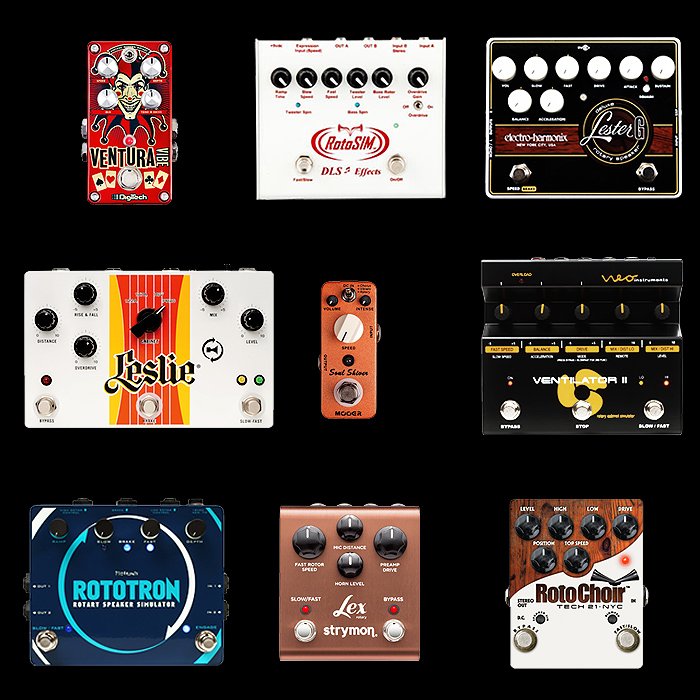
A while back this was one of my favourite effects, and while my Strymon Mobius got me close, it was not really quite close enough - so I was resolved to add the more full-featured and dedicated Strymon Lex. Since then, all manner of priorities have taken precedence and the Lex kept being bumped down the list. In the same time I’ve learnt quite a bit more about all the various rotary / leslie speaker effects there are currently out there. Also my Mobius has been bumped for the newer Boss MD-500 - which has a couple of extra parameters versus the Mobius - but is still quite a basic rotary, and does not ’swirl’ quite enough for my liking.
It seems that most agree that the full-featured Neo Instruments Ventilator II is currently the leader of the pack, and if you are a pro player - dedicated to the rotary sound, and don’t wish to lug around a one tonne speaker with you, then this is currently the pedal of choice. For my liking though and for just a single effect it is rather large. You have the even larger but not as good Hammond Leslie Digital Cream, and then some other reasonably large offerings from DLS Effects, Electro-Harmonix and Pigtronix - probably in that descending order of preference too. Generally in the larger pedal category the Ventilator II is quite significantly the best on offer, possibly followed by the DLS RotoSIM.
In the Medium-size bracket you have essentially 3 pedals fighting it out - Neo’s Mini Vent II which is not pictured, but is roughly the same size as the Strymon Lex, but consists of just two footswitches and an A/B button on the socket side of the pedal - if you wish to adjust settings - this is all done via a relatively complex morse-code exercise using just the 2 footswitches and applying those settings to either the A or B side of the option switch. Then there is the 4-dial Lex, which has dual functions on all dials (similar to Ventilator II) - although the ’Cab Direction’ option is kind of useless - so equivalent to 7 dials really, which is only beaten out by EHX Lester G’s 8 and the Ventilator’s 10 parameters. Finally we have probably my favourite mid-range one - the Tech 21 Roto Choir, even though it is missing a few parameter settings - e.g. Acceleration and Slow Speed options, and has no ’Brake’ footswitch function; it also has an awkward TRS style stereo-out, which means you need special cables / splitter adaptor to use - which adds to cost. The Roto Choir though with its ’Speaker Sim’ and ’Biamped’ buttons active still makes my favourite rotary speaker sound. I don’t really care how authentic it is - I just love the complex swirl of it. I can also overlook its missing options because of how good it sounds. Some will feel it’s a little over-the-top, but you do have various ways to temper the effect, and in the Medium category it is all about compromises. There was a really tight 3-way head-to-head between the Mini Vent, Lex and Roto Choir and at any point any of those could have been in the lead - initially the Mini Vent was leading, then the Lex, but I resolved that overall, the Roto Choir most closely matched my sonic needs.
In the smaller pedal categories - i.e. regular and mini, I think the DigiTech Ventura Vibe makes a pretty decent go of it - it is the only regular-sized pedal with a proper stereo rotary effect - wish there were more. I have long been seeking a decent regular-sized rotary effect to sit in my pedal chain. The Chase Bliss Warped Vinyl is mono only, as is the Dry Bell Vibe Machine; while the Dawner Prince is also more of a Vibe pedal, and requires external footswich for speed ramping - so the only suitable solution really is the Ventura Vibe, nothing else exists at that size. In the mini pedal form-factor you can’t really go wrong with Mooer, and its offering in this area is the Soul Shiver - which give you a pretty decent flavour of rotary - considering it is mono only.
So if I was a dedicated rotary pro, then the Ventilator II is the only proper choice really. A lot of people like the Mini Vent II, but I don’t like it’s lack of dials, and changing settings is overly fussy. That leaves you with the Lex, Roto Choir and Ventura Vibe. For my various criteria, and weighing up the various pros and cons - pricing etc. I reckon I will get the Roto Choir as my main dedicated rotary effect, with the Ventura Vibe as its more compact deputy when I’m tight for space. According to most, none of these pedals truly capture the magic of a genuine Leslie speaker, although the Ventilator II gets you kind of close. Even though the Roto Choir may not be an exact emulation as such, it is closest to the imaginary sound I have in my head for that effect - so that’s my main choice then.
Some may comment that I’ve overlooked some obvious contenders here, including the tube-driven Hughes & Kettner Rotosphere - but I don’t really like dealing with valves unnecessarily - they are a must for some of my amps - which makes them a liability too, I don’t really want them in my pedals - even though I really like the sound of the Butler, Effectrode and Kingsley tube-driven pedals - they tend to be larger, more temperamental, and a lot more fragile - several have unnecessarily high noise floors - which indeed the Rotosphere is guilty of on occasion - these are all just problems I can generally do without!
Pedals are listed alphabetically by brand:
DigiTech Ventura Vibe - £119
Most of the Rotary Pedals tend to be bigger boxes - as you kind of really need stereo for the back-and forth swirling + panning effects to work properly. When I did the piece on Chorus + Vibrato - a lot of those pedals mention being able to do the Leslie / Rotary effect, yet most of those have only a single mono output (they're also most singular waveform Vibes, while rotary as two opposing wave forms which can move in opposite directions to each other). Another thing about the rotary effect is the speed ramp - moving between the slow and fast rotor effects and including the acceleration up and down that ramp - which requires some sort of footswitch. The very best rotary pedals have an additional 'brake' footswitch to gently bring the spinning to an elegant halt - still leaving you with the sound of the preamp, and a very slight hint of chorus. The Ventura Vibe does a lot of things for a regular-sized pedal, but it does have its limits. It is genuinely stereo - meaning that it can properly replicate the rotary effect as such, you can also use the footswitch via momentary hold to speed up, and them slow down when you step off. This is obviously a compromise of sorts, and there is no 'brake' function here. If DigiTech added a second footswitch you could to the ramp up/down with ease, and use momentary function for the brake. As it is, this is the only decent proper stereo rotary effect pedal as this size - and therefore it's being added to my pedal collection.
DLS Effects RotoSIM - $299
A highly rated proper stereo rotary pedal with a full range of tone-shaping dials and including a switchable overdrive option. Lots of players love the sound of this one. The only thing some of these pedals have over it is an additional brake footswitch, and a mic distance setting - all these pedals have slightly different parameters, and none have quite the number the Ventilator II does. I can't find any UK distributor for this pedal currently, you can buy direct from DLS, and there are also the occasional ones that turn up on Reverb.com and Ebay. It's worth considering for sure, but you can get a Ventilator II for around the same price / size! DLS also has the medium-size RotoSpin version which drops just the Gain dial but retains the Overdrive On/Off switch, it also drops the expression socket of its larger brother - I still feel though that the Lex, Mini Vent and Roto Choir are stronger offerings at that enclosure size.
Electro-Harmonix Lester G Deluxe - £204
A full-featured Leslie pedal with dual-effect left footswitch which combines speed ramp and brake functions. This one has no less than 8 dials to tweak every imaginable parameter - as well as an additional 'Squash' option button. A really decent rotary pedal that does not seem to get the support it deserves. It is typically 1/3 less expensive than the other big box offerings, but at this size you would still probably pay the extra and go with the Ventilator II.
Hammond Leslie Digital Pedal 'Cream' -£337
Hammond acquired the original Leslie brand back in 1980, for the speaker which was initially most used with the Hammond organs, and which is the catalyst for all these rotary effects pedals. You may consider getting the one best connected to the original technology - this is Hammond's digital version of the Leslie. It features the full compliment of 3 footswitches (including brake) and has 4 different Cabinet modes alongside 5 dials. This is easily the largest pedal featured here - and thus it kind of disqualifies itself for me. I feel that there are others here as good, if not better and at a significantly more compact form-factor - and better price. Hammond also does a smaller 'G' Leslie pedal offering with less parameters and minus the 'brake' footswitch - more dedicated towards just guitar, but missing quite a few of the options - such as overdrive and mic distance; I don't feel that is quite up with my other 3 mid-sized options mentioned.
Mooer Soul Shiver - £57
This one is really only included for size and price. It will give you a flavour of Rotary, as well as Chorus and Vibrato, but as it is mono only you won't get the full panning and swirl. Probably more useful for the other two flavours - as I've said previously - you can't really get the proper rotary feel without full stereo. If you just want a sort of texture then this pedal is fine, otherwise the next smallest option is the Ventura Vibe listed first.
Neo Instruments Ventilator II - £299
This is currently the one that gets the biggest pro following - German pedal-maker Neo Instruments does just one thing, and it does it seriously well. It's still a big pedal though, but it does have the full range of dials, as well as the full 3 footswitches, including a separate one for 'brake'. If you're really serious about rotary - as a gigging and recording professional, then this is probably the one for you - it has 5 dual-function dials giving you control over 10 parameters, and every setting you need. There is also a smaller version - the Mini Vent II - which has two footswitches and just a single A/B button switch. All the settings are accomplished in morse-code like fashion by holding down one or the other or both footswitches together for a certain amount of seconds and in a specific sequence - a little complex for my liking, but brings you down to Strymon medium enclosure size. There's usually only about £50 difference in price between the full-size and the mini. The former has the advantage of direct access to all / more settings, while the Mini's main thing is both its size and the A/B alternative voicing settings switch. For my needs I would probably risk the smaller one here for sake of better pedalboard compatibility - while it also gives you the brake mode via stepping on both footswitches simultaneously.
Pigtronix Rototron - £249
This is another worthy yet relatively large offering, does not have the full range of settings like many of the others, but still sounds pretty great and is proper stereo out. It uses 3 expression out jacks for connecting to a remote brake switch as well as separate controls for the two individual rotary speakers / horn - a lot of pedals mind. I would have preferred having either 3 footswitches or a momentary function enabled on the speed footswitch so that you can activate the brake by holding the switch down for 2+ seconds. This is likely the least-well-featured of the larger size pedals yet still has some unique features to go with its relatively premium price.
Strymon Lex -£299
I long had my eye on this pedal, which has a significant following also. It has the full range of settings - brake is activated via holding slow/fast footswitch - strange why all the 2-footswich pedals do not do this. All the dials here have secondary functions which means you are in effect dealing with 8 dials (although one of those setting is a little useless). There was a time this would have been my first choice, now I am not so sure.
Tech 21 NYC Roto Choir - £239
This is another of the mid-sized offerings vs the Neo Mini Vent and Strymon Lex. It kind of looks odd that there is only one jack socket out for stereo, but it is TRS stereo format - meaning you need a Y splitter cable here. The Roto Choir has a full range of settings dials, along with two smart button switches - 'Speaker Sim' and 'Biamped' - which make it a little different to the others. Unlike the Lex and Mini Vent, this does not have a 'brake' function. You also cannot adjust the slow rotor speed or the acceleration ramp - so it is missing a couple of parameters really.
In summary therefore, if I was deadly serious about getting the very best rotary effect I would probably go for the full-fat slightly large Ventilator II. If size was critical and pricing - then the Ventura Vibe gives you something plenty useful, and as a handy compromise in the medium space it's a toss-up between the Mini Vent, Lex and Roto Choir - I could go for each of those on any given day - I've decided that the Roto Choir just edges it for now (best swirl!) - so my two favourites would be that and the Ventura Vibe, as I don't want to sacrifice too much pedalboard real-estate to just a single effect.







